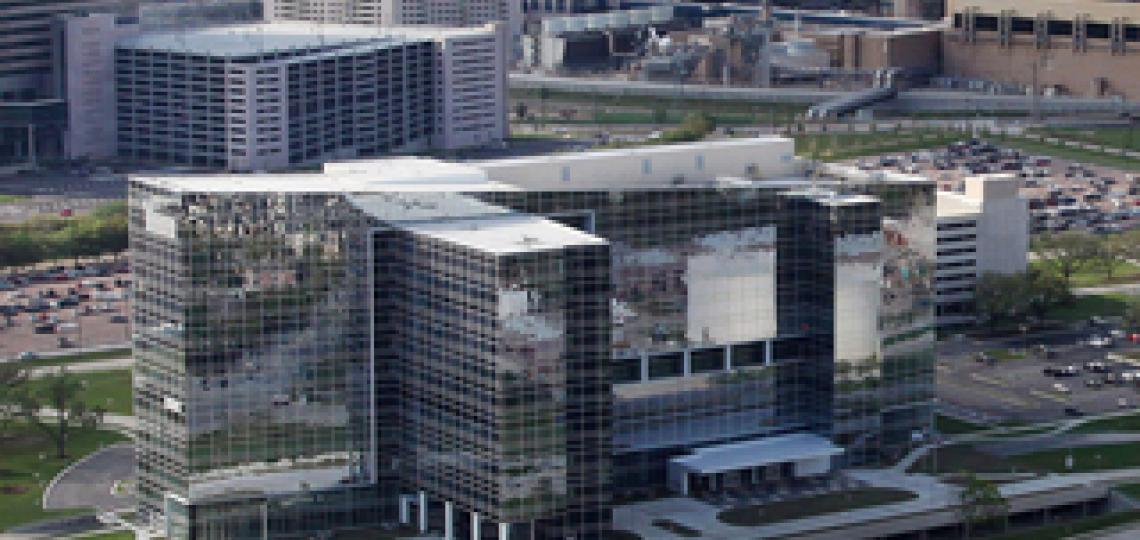
Your Transcranial magnetic stimulation headache images are ready. Transcranial magnetic stimulation headache are a topic that is being searched for and liked by netizens today. You can Get the Transcranial magnetic stimulation headache files here. Find and Download all free vectors.
If you’re looking for transcranial magnetic stimulation headache pictures information related to the transcranial magnetic stimulation headache interest, you have visit the ideal blog. Our site frequently provides you with suggestions for seeing the maximum quality video and picture content, please kindly hunt and find more enlightening video articles and images that fit your interests.
Transcranial Magnetic Stimulation Headache. Transcranial Magnetic Stimulation TMS or repetitive TMS rTMS is a non-invasive non-drug medical therpay that delivers highly focused MRI-strength magnetic pulses to stimulate nerve cells in a localized part of the brain. Transcranial magnetic stimulation TMS is a technique that applies a brief magnetic pulse to the scalp and underlying brain. In this study 68 subjects with major depression were. Transcranial magnetic stimulation reduces pain in patients with major depression.
 Springtms Device For Migraine Receives Fda Approval Migraine Transcranial Magnetic Stimulation Headache Prevention From pinterest.com
Springtms Device For Migraine Receives Fda Approval Migraine Transcranial Magnetic Stimulation Headache Prevention From pinterest.com
Transcranial Magnetic Stimulation TMS or repetitive TMS rTMS is a non-invasive non-drug medical therpay that delivers highly focused MRI-strength magnetic pulses to stimulate nerve cells in a localized part of the brain. About transcranial magnetic stimulation TMS It has been known for some time now that stimulation of the superficial layer of the brain the cortex can lead to a decrease of chronic pain. While transcranial magnetic stimulation TMS has been studied for the treatment of psychiatric disorders emerging evidence supports its use for pain and headache by stimulating either motor cortex M1 or dorsolateral prefrontal cortex DLPFC. Initially TMS was used to study the function of the cerebral cortex but it has now become a treatment for migraine one of the most common and debilitating neurological conditions. In the treatment of 30 patients with chronic tension-type headache have included transcranial magnetic stimulation apparatus TAMAS. Its chronic form is often the most ignored and challenging to treat.
It was evaluated for the treatment of migraine based on the theory.
Stanford Systems and Neuroscience Pain Laboratory SNAPL has just launched a new study to test if Transcranial Magnetic Stimulation TMS a non-invasive brain stimulation technique can reduce pain related to Complex Regional Pain Syndrome CRPS or Reflex Sympathetic Dystrophy RSD. This study evaluated the change in reported pain in patients with medication-resistant major depression receiving transcranial magnetic stimulation TMS compared with sham stimulation. In the treatment of 30 patients with chronic tension-type headache have included transcranial magnetic stimulation apparatus TAMAS. Initially TMS was used to study the function of the cerebral cortex but it has now become a treatment for migraine one of the most common and debilitating neurological conditions. The headache is caused because on its way to the brain the magnetic field stimulates the scalp muscles causing them to contract and this can cause a muscle tension-type of headache. Tension-type headache TTH is the most common type of primary headache disorder.
 Source: pinterest.com
Source: pinterest.com
Treating Headaches with Magnetic Stimulation. Transcranial magnetic stimulation TMS is a novel technique in the treatment of chronic pain. Tension-type headache TTH is the most common type of primary headache disorder. This is believed because on the one hand such stimulation interferes with inappropriate pain signals and on the other hand strengthens the way the brain. It was evaluated for the treatment of migraine based on the theory.
 Source: pinterest.com
Source: pinterest.com
Transcranial magnetic stimulation TMS is a technique that applies a brief magnetic pulse to the scalp and underlying brain. It was evaluated for the treatment of migraine based on the theory. Recently clinicians have been using repetitive transcranial magnetic stimulation rTMS for treating various pain conditions. In this study 68 subjects with major depression were. About transcranial magnetic stimulation TMS It has been known for some time now that stimulation of the superficial layer of the brain the cortex can lead to a decrease of chronic pain.
 Source: pinterest.com
Source: pinterest.com
In the treatment of 30 patients with chronic tension-type headache have included transcranial magnetic stimulation apparatus TAMAS. The headache is caused because on its way to the brain the magnetic field stimulates the scalp muscles causing them to contract and this can cause a muscle tension-type of headache. While transcranial magnetic stimulation TMS has been studied for the treatment of psychiatric disorders emerging evidence supports its use for pain and headache by stimulating either motor cortex M1 or dorsolateral prefrontal cortex DLPFC. About transcranial magnetic stimulation TMS It has been known for some time now that stimulation of the superficial layer of the brain the cortex can lead to a decrease of chronic pain. This is believed because on the one hand such stimulation interferes with inappropriate pain signals and on the other hand strengthens the way the brain.
 Source: pinterest.com
Source: pinterest.com
Recently clinicians have been using repetitive transcranial magnetic stimulation rTMS for treating various pain conditions. The course of treatment was 5 procedures. Tension-type headache TTH is the most common type of primary headache disorder. The headache is caused because on its way to the brain the magnetic field stimulates the scalp muscles causing them to contract and this can cause a muscle tension-type of headache. Transcranial magnetic stimulation TMS is a technique that applies a brief magnetic pulse to the scalp and underlying brain.
 Source: in.pinterest.com
Source: in.pinterest.com
This systematic narrative review aimed to examine the use and efficacy of rTMS for controlling various pain. Transcranial magnetic stimulation TMS is a neurophysiological technique with a long established pedigree of safety tolerability and efficacy. While transcranial magnetic stimulation TMS has been studied for the treatment of psychiatric disorders emerging evidence supports its use for pain and headache by stimulating either motor cortex M1 or dorsolateral prefrontal cortex DLPFC. The most common side effects of TMS a headache which typically occurs during or immediately after the procedure. Have you heard about the use of magnetic stimulation to treat headaches.
 Source: pinterest.com
Source: pinterest.com
Transcranial Magnetic Stimulation TMS or repetitive TMS rTMS is a non-invasive non-drug medical therpay that delivers highly focused MRI-strength magnetic pulses to stimulate nerve cells in a localized part of the brain. The most common side effects of TMS a headache which typically occurs during or immediately after the procedure. Stanford Systems and Neuroscience Pain Laboratory SNAPL has just launched a new study to test if Transcranial Magnetic Stimulation TMS a non-invasive brain stimulation technique can reduce pain related to Complex Regional Pain Syndrome CRPS or Reflex Sympathetic Dystrophy RSD. This is believed because on the one hand such stimulation interferes with inappropriate pain signals and on the other hand strengthens the way the brain. Effect of Repetitive Transcranial Magnetic Stimulation on Pain Management.
 Source: pinterest.com
Source: pinterest.com
Transcranial magnetic stimulation TMS is a neurophysiological technique with a long established pedigree of safety tolerability and efficacy. However its clinical implementation is hindered due to a lack of consensus in the quality of clinical evidence and treatment. Its chronic form is often the most ignored and challenging to treat. Moderate-level evidence exists to support repetitive transcranial magnetic stimulation rTMS as a potentially effective therapy for reducing headache. It was evaluated for the treatment of migraine based on the theory.
 Source: pinterest.com
Source: pinterest.com
Transcranial magnetic stimulation TMS is a neurophysiological technique with a long established pedigree of safety tolerability and efficacy. Initially TMS was used to study the function of the cerebral cortex but it has now become a treatment for migraine one of the most common and debilitating neurological conditions. While transcranial magnetic stimulation TMS has been studied for the treatment of psychiatric disorders emerging evidence supports its use for pain and headache by stimulating either motor cortex M1 or dorsolateral prefrontal cortex DLPFC. It was evaluated for the treatment of migraine based on the theory. To perform a systematic review on the use of transcranial magnetic stimulation TMS and transcranial direct current stimulation tDCS for the treatment of specific headache disorders ie migraine tension cluster posttraumatic.
 Source: es.pinterest.com
Source: es.pinterest.com
Effect of Repetitive Transcranial Magnetic Stimulation on Pain Management. Transcranial magnetic stimulation transcranial direct current stimulation migraine headache Headache 201901-19 INTRODUCTION RationaleHeadache disorders are within the top 10 most prevalent medical disorders world-wide and are a significant global contributor to years lived with. Transcranial magnetic stimulation TMS is a technique that applies a brief magnetic pulse to the scalp and underlying brain. Recently clinicians have been using repetitive transcranial magnetic stimulation rTMS for treating various pain conditions. Its chronic form is often the most ignored and challenging to treat.
 Source: pinterest.com
Source: pinterest.com
It was evaluated for the treatment of migraine based on the theory. The headache is caused because on its way to the brain the magnetic field stimulates the scalp muscles causing them to contract and this can cause a muscle tension-type of headache. Transcranial Magnetic Stimulation TMS or repetitive TMS rTMS is a non-invasive non-drug medical therpay that delivers highly focused MRI-strength magnetic pulses to stimulate nerve cells in a localized part of the brain. Recently clinicians have been using repetitive transcranial magnetic stimulation rTMS for treating various pain conditions. The most common side effects of TMS a headache which typically occurs during or immediately after the procedure.
 Source: in.pinterest.com
Source: in.pinterest.com
This systematic narrative review aimed to examine the use and efficacy of rTMS for controlling various pain. While transcranial magnetic stimulation TMS has been studied for the treatment of psychiatric disorders emerging evidence supports its use for pain and headache by stimulating either motor cortex M1 or dorsolateral prefrontal cortex DLPFC. Effect of Repetitive Transcranial Magnetic Stimulation on Pain Management. This is believed because on the one hand such stimulation interferes with inappropriate pain signals and on the other hand strengthens the way the brain. A Systematic Narrative Review.
 Source: in.pinterest.com
Source: in.pinterest.com
A Systematic Narrative Review. Moderate-level evidence exists to support repetitive transcranial magnetic stimulation rTMS as a potentially effective therapy for reducing headache. While transcranial magnetic stimulation TMS has been studied for the treatment of psychiatric disorders emerging evidence supports its use for pain and headache by stimulating either motor cortex M1 or dorsolateral prefrontal cortex DLPFC. Effect of Repetitive Transcranial Magnetic Stimulation on Pain Management. Transcranial magnetic stimulation reduces pain in patients with major depression.
 Source: pinterest.com
Source: pinterest.com
This study evaluated the change in reported pain in patients with medication-resistant major depression receiving transcranial magnetic stimulation TMS compared with sham stimulation. Stanford Systems and Neuroscience Pain Laboratory SNAPL has just launched a new study to test if Transcranial Magnetic Stimulation TMS a non-invasive brain stimulation technique can reduce pain related to Complex Regional Pain Syndrome CRPS or Reflex Sympathetic Dystrophy RSD. This study evaluated the change in reported pain in patients with medication-resistant major depression receiving transcranial magnetic stimulation TMS compared with sham stimulation. It was evaluated for the treatment of migraine based on the theory. Transcranial magnetic stimulation TMS is a technique that applies a brief magnetic pulse to the scalp and underlying brain.
 Source: pinterest.com
Source: pinterest.com
Recently clinicians have been using repetitive transcranial magnetic stimulation rTMS for treating various pain conditions. Transcranial magnetic stimulation TMS is a technique that applies a brief magnetic pulse to the scalp and underlying brain. Transcranial magnetic stimulation TMS is a novel technique in the treatment of chronic pain. Its chronic form is often the most ignored and challenging to treat. While transcranial magnetic stimulation TMS has been studied for the treatment of psychiatric disorders emerging evidence supports its use for pain and headache by stimulating either motor cortex M1 or dorsolateral prefrontal cortex DLPFC.
 Source: id.pinterest.com
Source: id.pinterest.com
We evaluated the severity of pain on a visual analogue scale VAS the portability procedures the. Tension-type headache TTH is the most common type of primary headache disorder. However its clinical implementation is hindered due to a lack of consensus in the quality of clinical evidence and treatment. Treating Headaches with Magnetic Stimulation. It was evaluated for the treatment of migraine based on the theory.
 Source: pinterest.com
Source: pinterest.com
This study evaluated the change in reported pain in patients with medication-resistant major depression receiving transcranial magnetic stimulation TMS compared with sham stimulation. Its chronic form is often the most ignored and challenging to treat. Treating Headaches with Magnetic Stimulation. Stanford Systems and Neuroscience Pain Laboratory SNAPL has just launched a new study to test if Transcranial Magnetic Stimulation TMS a non-invasive brain stimulation technique can reduce pain related to Complex Regional Pain Syndrome CRPS or Reflex Sympathetic Dystrophy RSD. Effect of Repetitive Transcranial Magnetic Stimulation on Pain Management.
 Source: pinterest.com
Source: pinterest.com
While transcranial magnetic stimulation TMS has been studied for the treatment of psychiatric disorders emerging evidence supports its use for pain and headache by stimulating either motor cortex M1 or dorsolateral prefrontal cortex DLPFC. Treating Headaches with Magnetic Stimulation. About transcranial magnetic stimulation TMS It has been known for some time now that stimulation of the superficial layer of the brain the cortex can lead to a decrease of chronic pain. Transcranial magnetic stimulation TMS is a neurophysiological technique with a long established pedigree of safety tolerability and efficacy. Transcranial magnetic stimulation reduces pain in patients with major depression.
 Source: in.pinterest.com
Source: in.pinterest.com
In the treatment of 30 patients with chronic tension-type headache have included transcranial magnetic stimulation apparatus TAMAS. Moderate-level evidence exists to support repetitive transcranial magnetic stimulation rTMS as a potentially effective therapy for reducing headache. It was evaluated for the treatment of migraine based on the theory. While transcranial magnetic stimulation TMS has been studied for the treatment of psychiatric disorders emerging evidence supports its use for pain and headache by stimulating either motor cortex M1 or dorsolateral prefrontal cortex DLPFC. About transcranial magnetic stimulation TMS It has been known for some time now that stimulation of the superficial layer of the brain the cortex can lead to a decrease of chronic pain.
This site is an open community for users to do submittion their favorite wallpapers on the internet, all images or pictures in this website are for personal wallpaper use only, it is stricly prohibited to use this wallpaper for commercial purposes, if you are the author and find this image is shared without your permission, please kindly raise a DMCA report to Us.
If you find this site value, please support us by sharing this posts to your favorite social media accounts like Facebook, Instagram and so on or you can also save this blog page with the title transcranial magnetic stimulation headache by using Ctrl + D for devices a laptop with a Windows operating system or Command + D for laptops with an Apple operating system. If you use a smartphone, you can also use the drawer menu of the browser you are using. Whether it’s a Windows, Mac, iOS or Android operating system, you will still be able to bookmark this website.








